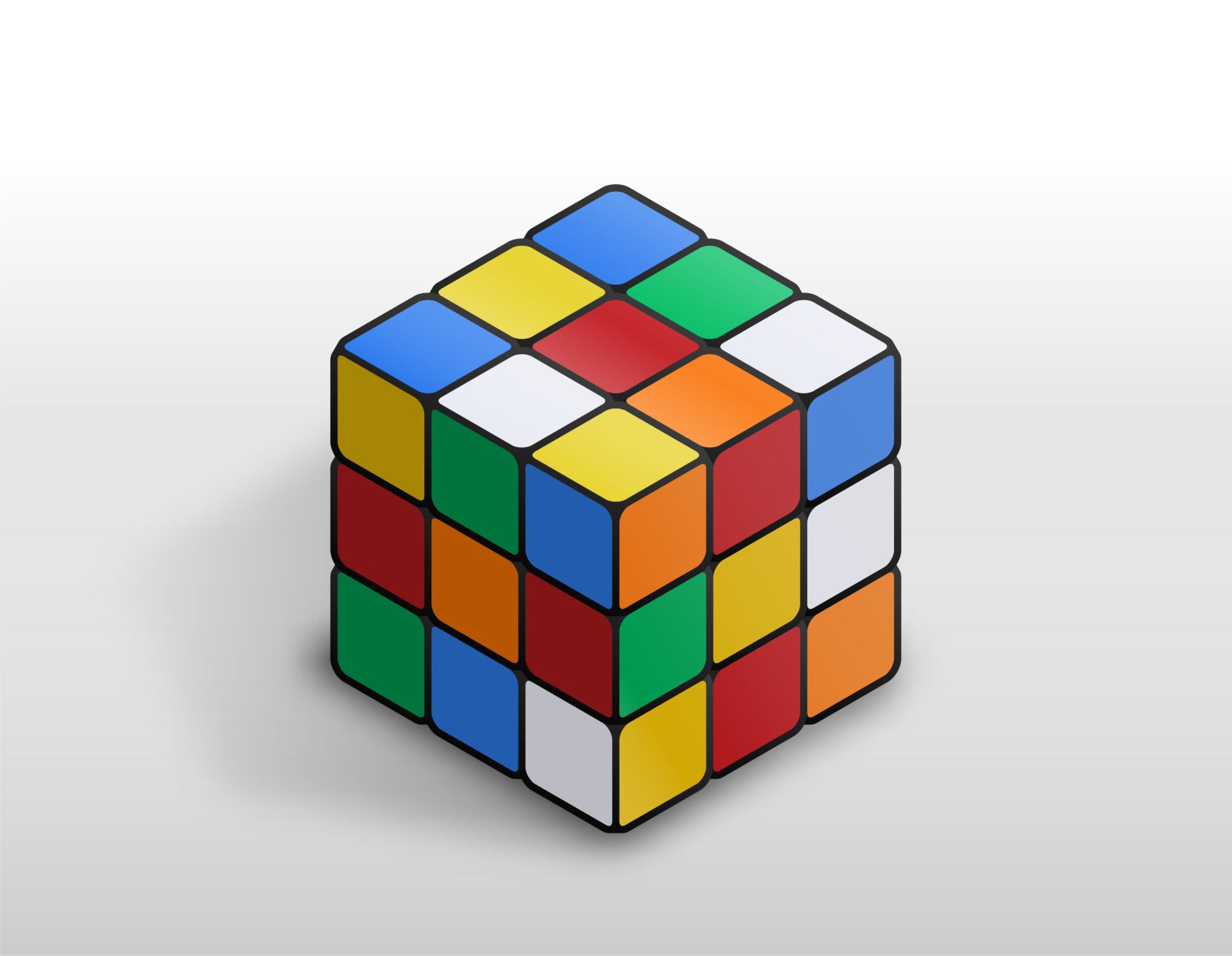
The official 5x5x5 magic cube is sold under the Rubik’s brand as the 
The Professor Cube is a 5x5x5 version of a Rubik's cube. If you already have a solid understanding of the 3x3x3 and 4x4x4 versions, then the 5x5x5 should be easy enough to solve. The cube contains the following types of pieces: 8 Corners (example UFR): these move just like the corners on all Rubik's Cubes. 12 Middle Edges (example UF): these move like the edges on a 3x3x3 cube.
Professor’s CubeThis site has all the pictures of all varirety of cube sizes, online virtual cube and top Rubiks cube videos./There another solver and stuff about the 5x5x5. It has stumped even the greatest minds around. Even the professor who invented it - Erno Rubik, thought it would be impossible to solve. However, over the years many algorithms for solving the Rubik's Cube were found and today learning how to solve the Rubik’s Cube is merely a task of following a series of steps and memorizing some algorithms. Online 5x5x5 Rubik's Cube Simulator - Professor's Cube. Play online with the Professor's Cube with this online 5x5x5 Rubik's Cube simulator. Press the Scramble button to jumble the 5x5x5 Rubik's puzzle then try to solve it using the rotation buttons. You can use the same buttons which you already know from the 4x4x4 Rubik's Revenge simulator.Every capital letter marks a face rotation.
or the Rubiks 5x5x5 . Verdes sells it under the name V-Cube 5. There are heaps of other brands for this puzzle; most follow the 5×5 convention in naming; for example, the Eastsheen 5x5x5, Shengshou 5x5x5, QJ 5×5, YJ 5×5, and so on.
. Verdes sells it under the name V-Cube 5. There are heaps of other brands for this puzzle; most follow the 5×5 convention in naming; for example, the Eastsheen 5x5x5, Shengshou 5x5x5, QJ 5×5, YJ 5×5, and so on.The face center axes of rotation are a generating set for the isometries of the cube, so as with all all face-turning cube puzzles, any piece can be placed in any isometric position.
However care must be taken in identifying isometric positions. For example, centre edge pieces are isometric to themselves under rotation, so centre pieces can be placed there in either orientation. But an off-centre edge piece is not isometric to itself under rotation, but to the other off-centre edge piece on its edge. Thus an off-centre edge piece can be placed where it belongs with a correct orientation, or misoriented in the other off-centre edge place. This fact is not readily apparent, since neighbouring off-centre edge pieces are identical, so between the two of them you can get both orientations in both positions.
Solving by reduction
Solving squares of face centres and matching up edge triples reduces the Professor’s Cube to a Rubik’s Cube
The most common approach to solving the Professor’s Cube is to solve each square of centres, and then match up each triple of edges. This reduces the Professor’s Cube to a Rubik’s Cube — a lovely example of reducing a group to a subgroup. Moreover the parity difficulties that arise with the Rubik’s Revenge do not occur with the Professor’s Cube:- Since this puzzle has an odd number of layers, each face has a fixed centre piece. This firmly establishes which colours belong on which faces, eliminating the danger of solving face centre squares in the wrong place
- There are also no parity issues with edges in the Professor’s Cube, again because of the odd number of layers: if the two off-centre pieces on an edge are flipped, this will be apparent unless the centre piece is also flipped, in which case these two parity errors cancel each other out.
Thus the Professor’s Cube is in some ways easier to solve than the Rubik’s Revenge. It can take more time to solve, but the extra time is spent in the repetitive employment of known techniques. The Rubik’s Revenge, on the other hand, requires additional algorithms to overcome parity issues that do not occur in the Professor’s Cube.
Number of positions
According to renowned cubemeister David Singmaster, the Professor’s Cube has 282,870,942,277,741,856,536,180,333,107,150,328,293,127,731,985,672,134,721,536,000,000,000,000,000 possible positions; on the short scale this is about 283 tresvigintillion.
God’s Number for the Professor’s Cube is unknown.
Variations and related puzzles
The Professors Cube is the 5x5x5 in a long series of magic cube puzzles, ranging from the 2x2x2 Pocket Cube, through the 3x3x3 Rubik’s Cube and the 4x4x4 Rubik’s Revenge, the V-Cube 6 and V-Cube 7, and beyond. There are also cuboids with a non-cubic aspect; for example the 2x3x4.
The Vertex-turning Octahedron Puzzle — the same core and number of layers as the Professor’s Cube, but a completely different shell and cut.
Professor's Cube Solution
Shell variants are virtually unknown. The Vertex-turning Octahedron Puzzle is, as the name would suggest, a vertex-turning octahedron puzzle. it has five layers. Considering the octahedron is dual to the cube, a vertex-turning octahedron puzzle will have the same core as a face-turning cube puzzle. With the same core and the same number of layers, we might expect the Vertex-turning Octahedron Puzzle to be quite similar to the Professor’s Cube, but this is not the case. The shell is completely different, and this profoundly affects the topology of the cut. The Vertex-turning Octahedron Puzzle is actually quite similar to the Pyraminx; it even has the same completely pointless independently rotating vertices.